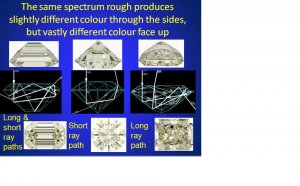- Joined
- May 1, 2008
- Messages
- 3,563
Global standards, arising from the trade, have support from a number of our leaders. Interesting is the presence of AGS and EGL (USA/Canada) but the absence of GIA.
IDEX: Task Force Aims to Establish Diamond Grading Standards
https://www.idexonline.com/portal_FullNews.asp?id=30520
Exceprts
...“Modern diamond grading relies upon expertise coupled with sophisticated technical equipment. It is as much about scientific measurement as personal judgment, and it makes sense for the technical aspects of grading to be more tightly defined,”...[/i] >>
Members of the AGA Board were joined at the meeting by:
Peter Yantzer – AGS Laboratory
Tom Tashey – PGI Laboratory
Don Palmieri – GCAL (Gem Certification and Assurance Laboratory)
Michael Allchin – The Birmingham Assay Office, England
Lore Kiefert – to report to the Lab Harmonization Committee
Branko Deljanin – EGL – Canada
Nick Del Re – EGL – USA
Doug Garrard – Gem-A, London
Renata Jasinevicius – University of Arizona, Senior Researcher, Physics Dept.
Chuck Bauman – Dazor Lighting, Research Director
IDEX: Task Force Aims to Establish Diamond Grading Standards
https://www.idexonline.com/portal_FullNews.asp?id=30520
Exceprts
...“Modern diamond grading relies upon expertise coupled with sophisticated technical equipment. It is as much about scientific measurement as personal judgment, and it makes sense for the technical aspects of grading to be more tightly defined,”...[/i] >>
Members of the AGA Board were joined at the meeting by:
Peter Yantzer – AGS Laboratory
Tom Tashey – PGI Laboratory
Don Palmieri – GCAL (Gem Certification and Assurance Laboratory)
Michael Allchin – The Birmingham Assay Office, England
Lore Kiefert – to report to the Lab Harmonization Committee
Branko Deljanin – EGL – Canada
Nick Del Re – EGL – USA
Doug Garrard – Gem-A, London
Renata Jasinevicius – University of Arizona, Senior Researcher, Physics Dept.
Chuck Bauman – Dazor Lighting, Research Director








300x240.png)